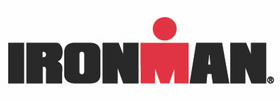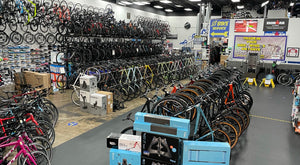
Hydration for Training & Racing
Hydration for Training & Racing
Staying hydrated plays an important role in your training and racing as an endurance athlete. Your training day or race day can be made or broken by the hydration decisions you make that day and in the days leading up to it. For over 20 years, Playtri coaches have been helping athletes create sustainable and simple hydration plans for their training and racing through performance testing and individual coaching plans.
Staying hydrated includes consuming water and sodium (a micronutrient or electrolyte lost in heavy quantities in sweat that is crucial to the absorption of water). Unfortunately, many age group athletes are dehydrated on a daily basis. Without proper hydration we don’t just see a performance decline, we are also negatively affecting our immune system, muscular function, blood pressure, body temperature regulation, digestive system, and energy metabolism. Typical daily water loss through sweat, urine, feces, and exhaled air is 2-3 liters for an adult. Net loss for an athlete can be anywhere from approximately 1.5 liters to 6.75 liters depending on the athlete’s size and environmental conditions.
To avoid dehydration on a daily basis, it is a good idea to always have a cup or water bottle with you, so that you can regularly take drinks. If, like many age group athletes, you are on the go with family and work functions soon after training is done, then it doesn’t hurt to set a timer on your phone or watch as a reminder to take a drink. I tell my athletes that a good starting point is to drink enough water throughout the day so that they are urinating approximately every 2-3 hours.
During training and racing, dehydration can have a direct impact on our ability to perform well. At just 3-4% dehydration, an athlete will start to experience a reduction in maximal aerobic power and endurance, increased rate of overheating from lower plasma volume, and compromised thermoregulation. At 5%, an athlete will experience decreased concentration and focus, headaches, increased respiratory rate, decreased cardiac output, chills, nausea, and a rapid pulse. Thus, we want to avoid anything more than 2% dehydration (or 2% decrease in body weight) during training and racing.
To help you get a good idea of where to start with your training and racing hydration strategy, here are some general recommendations that we regularly give to our individual coached athletes.
· For all key workouts, weigh yourself naked before and immediately after to see what percentage of body weight you have lost. Also note the time of day, temperature, humidity, altitude, menstruation phase (for those who menstruate), amount of water drank, amount of sodium consumed, and number of calories consumed.
· A good starting point is to plan to consume at least 1 bottle of a low-calorie electrolyte drink per hour while biking.
· For running, plan to consume at least 10 oz of a low-calorie electrolyte drink or water with salt capsules per hour.
· Remember that temperature, humidity, altitude, and menstruation phase can have a direct impact on your hydration strategy. For hot, humid (or really dry), or high elevation training and racing, adjust your hydration strategy to include drinking more.
Again, these are just general recommendations. Although we believe these recommendations work for the vast majority of triathletes, it certainly doesn’t hurt to work with a coach to help you plan
your hydration. And if you want a more specific nutrition and hydration plan, consider our performance testing options at Playtri Dallas (www.playtri.com/testing). A calorie expenditure test will help you know how many calories you expend at different heart rates, a sweat test will help you know how to hydrate to replace lost electrolytes, and a resting metabolic rate test will help provide you with a baseline for your daily nutrition planning.
Whichever way you go—experimenting with these recommendations, working with a coach, and/or getting performance testing—remember to get started now! Use your training to practice your hydration strategy so that race day is an enjoyable, challenging experience.
Jim Rowe is a Playtri Level 4 Coach and Coach Education Lead, a USAT LI Certified Coach, a NASM Certified Personal Trainer, and an Ironman and 70.3 World Championship Qualifier who works with adult athletes of all abilities from beginners to IRONMAN World Championship qualifiers. Learn more about Jim at www.playtri.com/jim-rowe.




